|
A Rare and Important
Chinese Spring
Autumn compound bi-metallic sword
(circa 500
BC)
The
length of many bronze swords is limited by the
metal used to make them. Hard alloys used for
sharpness can easily break while strong flexible
alloys easily loose sharpness. Long, bi-metal
swords that had both strength and sharpness first
appeared in the late Spring & Autumn period,
771-476 BC. Examples remain rare. These high
technology masterpieces were double cast using
strong copper-rich bronze for the handle and
blade's inner core. Then hard tin-rich bronze is
used for the blade's outside and/or edges.
This long 66 cm sword is 4.6 cm wide and weighs
only 908 grams. The sword has several features
similar to other known examples, 1) a 65 cm
bi-metal sword in the Hangzhou Arts & Crafts
Museum, and 2) the famous 55.6 cm, 875 gram
sword of Goujian King of Yue. Both are pictured
below.
This sword's
blade is made of a yellowish high tin content
alloy that provides the hardness required for
sharp cutting edges. The hilt is made of a
reddish high-copper content bronze providing
high strength and flexibility to prevent
breakage. Its design is nearly
identical to the Hangzhou sword and both may
have be made in the same time and region using
similar methods. Its surface has resisted deep
corrosion like other early swords thought to
have had protective treatments.
The sword's blade retains significant surface
luster which easily reflects images. This sword
also has a unique feature seen only on the sword
of Goujian. Both are missing two rings often
used on sword hilts but both have ring marks
where rings should be. Such ring marks are very
rare. The reason for the marks is unknown but
might signify high status.
Images
This sword side
one (top), side two (bottom)
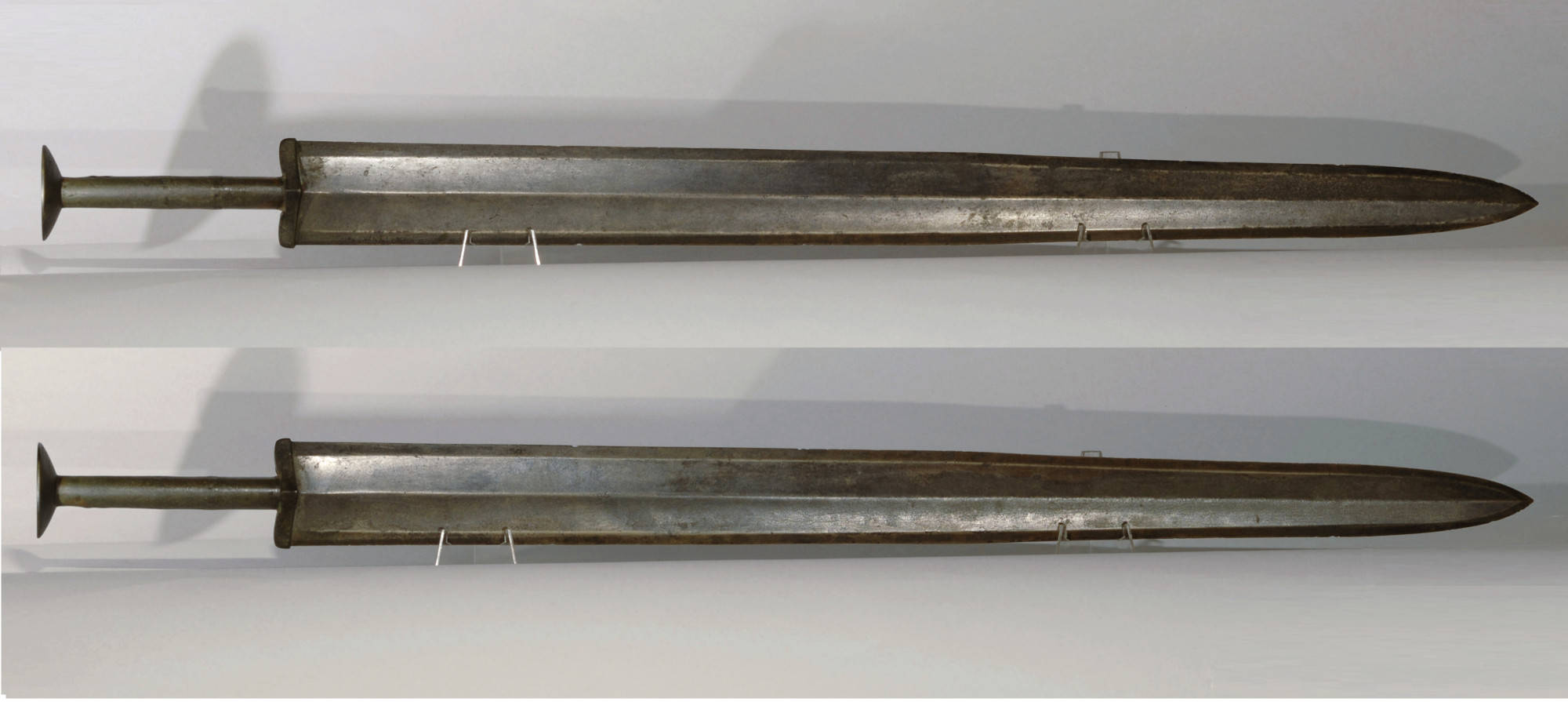
Hangzhou
Arts and Crafts Museum, compound bi-metallic sword

Comparison of different facets of
this sword while standing.
From left to right: side one (low light), side
one, side two, edge on view.
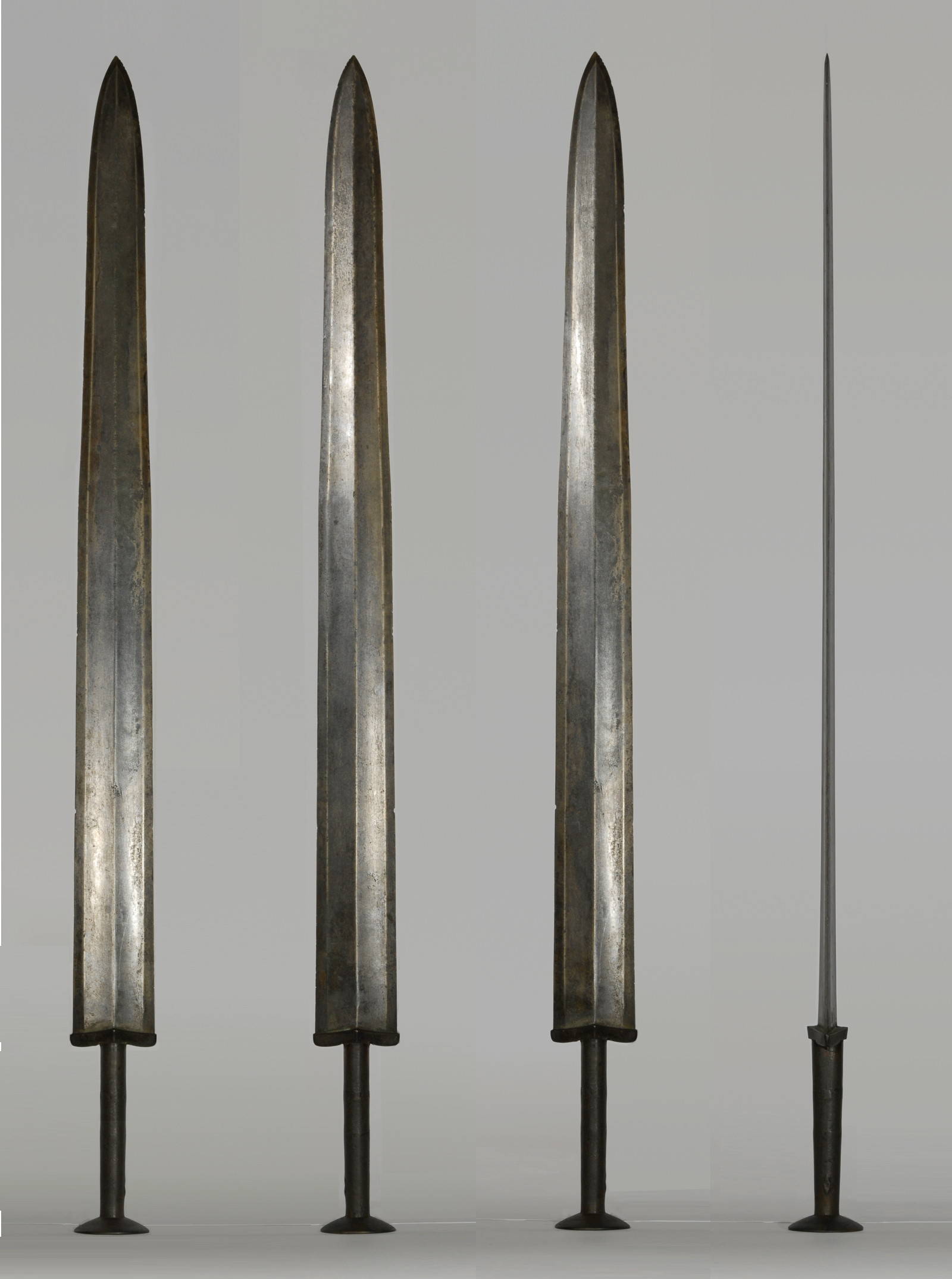
A comparison of
various design details including the pommel, handle,
and hilt. This sword (top), Hangzhou Arts &
Crafts Museum's sword (bottom). Design and method of
manufacture looks almost identical.
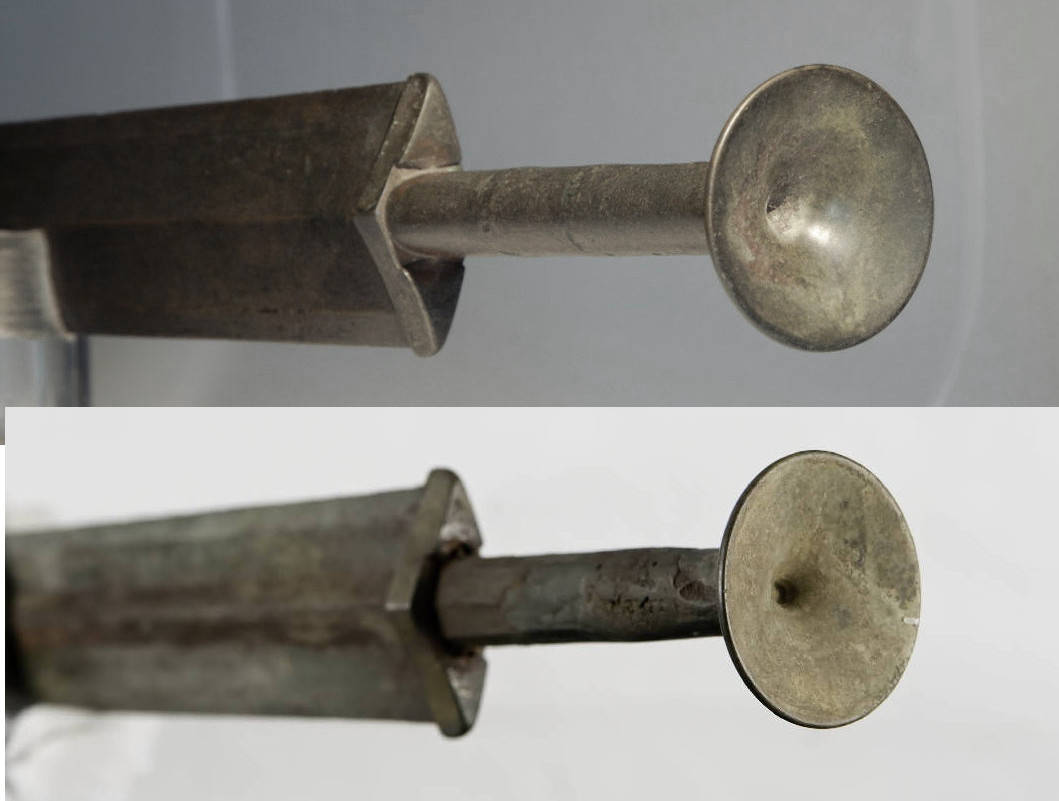
Mysterious missing ring marks
Rare missing ring
marks on hilt. Each handle has two slightly raised
rings near the middle lengthwise. This sword
(top) Sword of Goujian (bottom). The reason for the marks is unknown
but might signify high status.

Compound Bi-metallic Construction
View of hilt and blade joint.
The hilt is made of a strong, copper-rich alloy
with a deep red-brown tone seen near the joint to
the left. The blade is made of a tin-rich bronze
with a silver-yellow tone and covered with very
thin green black patina.
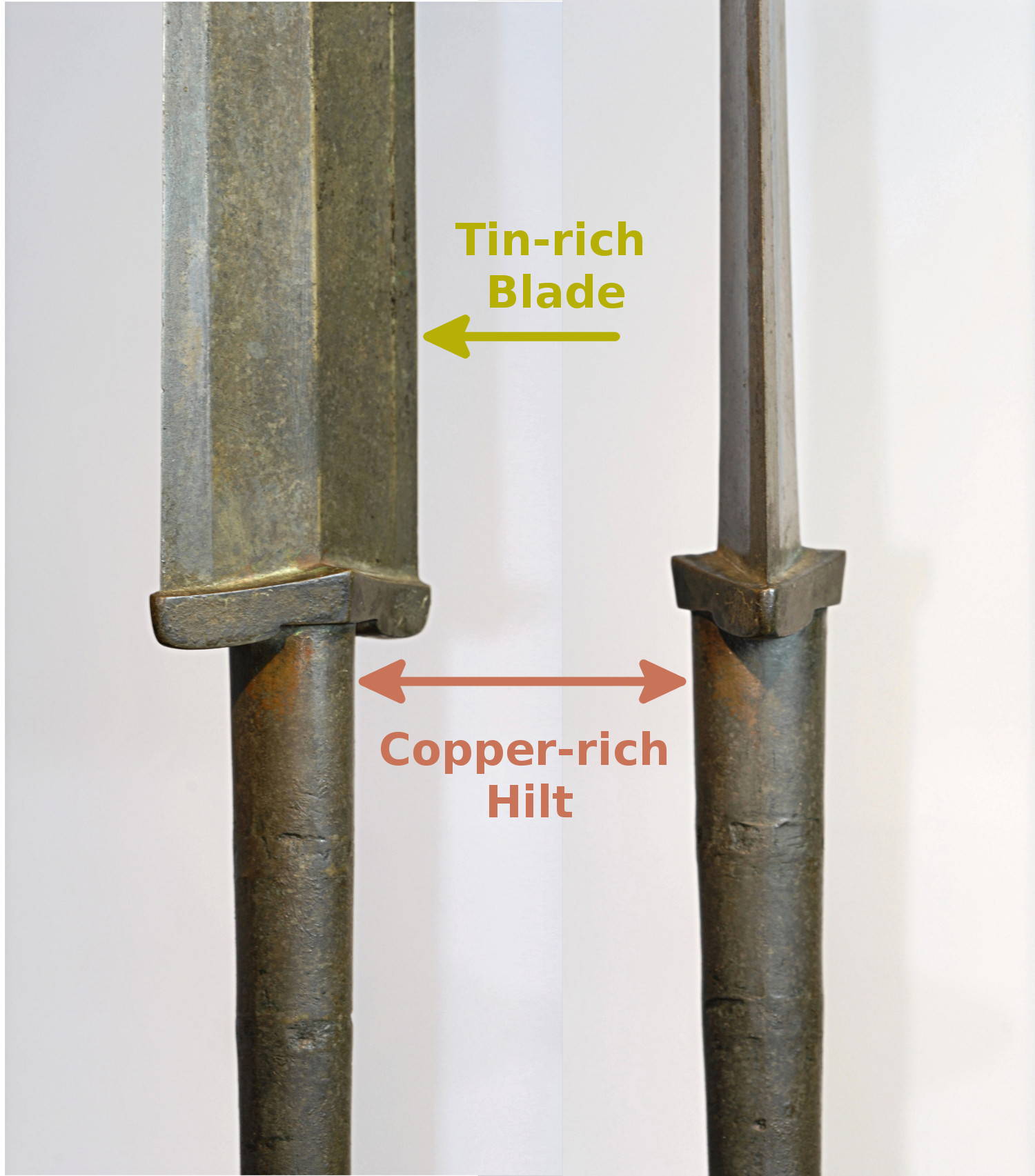
Demonstration
of the sword's highly reflective surface
Sword's that do not experience deep encrustation
over time, some of which had protective
treatments, can retain their original luster
even with a thin patina layer. Swords that had
anti-corrosion treatment sometimes have mottled
very dark to black patches.
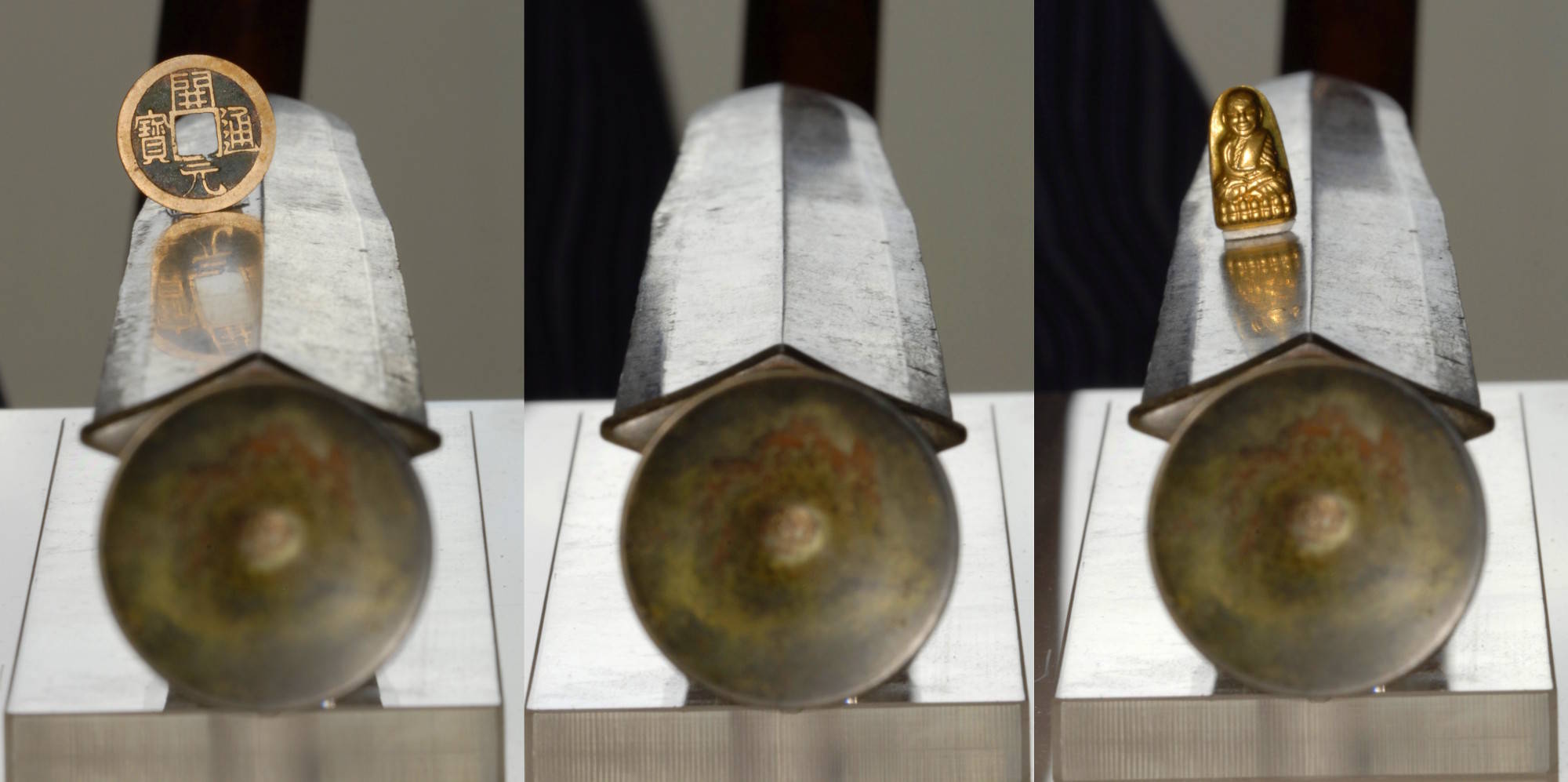
Comparison to a
standard length 45 cm. Warring States Sword
The belowimages
compare this sword with a later 45 cm. Warring
States sword.
Left, edge on views, right, side views. Both
swords are balanced with their pommels resting on
a flat piece of glass. As measured, there is only
a 0.1 degree difference in angle between the two
swords.
 
References
Hangzhou Arts & Crafts Museum sword
https://artsandculture.google.com/asset/compound-bronze-sword-from-spring-autumn-and-warring-states-period/1QGxXtRgK3FpHw
https://artsandculture.google.com/asset/details-iii/1QGxXtRgK3FpHw?childAssetId=HwFJ5XUuMWCyJQ
Sword of Goujian
https://en.wikipedia.org/wiki/Sword_of_Goujian
|









